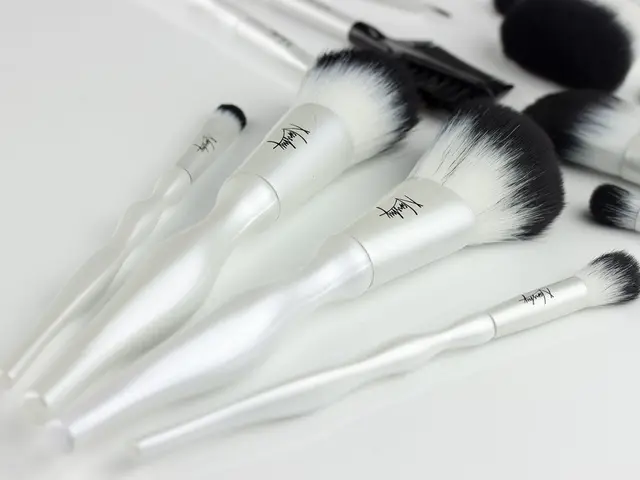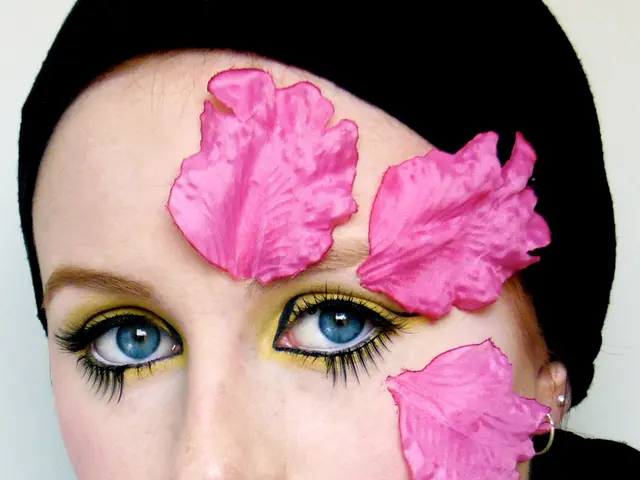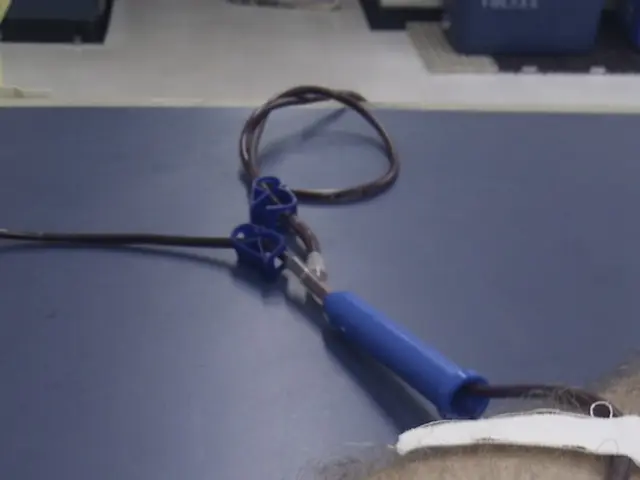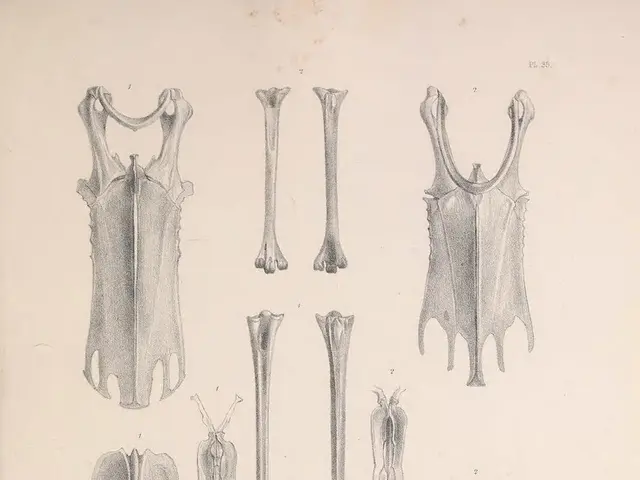Fierce Rosacea Breakout: Understanding Triggers, Signs, and Remedies
In Your Face: The Bold Discourse on Rosacea Fulminans
Rosacea Fulminans, a rare and hellish skin condition, ambushes you suddenly and often ravages the central part of your face - the chin, cheeks, and nose. Some call it Pyoderma Faciale, but whatever it's named, it ain't pretty. This formidable foe manifests itself in flushed, swollen, and agonizing nodules and pimples that blend together, unlike ordinary rosacea or acne.
Until scientists crack the case, the exact cause of Rosacea Fulminans remains an enigma. However, recent findings suggest a connection to inflammatory bowel disease and pregnancy, as well as prior rosacea. Stress, hormonal fluctuations, and certain medications may also spark this beast.
Reviews from 2020 and 2021 hint that certain dietary factors could act as triggers, but keep in mind that these insights mainly apply to rosacea, not Rosacea Fulminans. Potential dietary triggers include spicy foods, alcohol, cinnamaldehyde-rich edibles (like chocolate, tomatoes, and citrus fruits), histamine-heavy foods, and hot drinks. But remember, individual sensitivities differ wildly, so what flares one person's face might be fine for another.
Get a Glimpse of Rosacea Fulminans
The symptoms of Rosacea Fulminans primarily target the forehead, nose, cheeks, and chin, and can include:
- Rapid skin color changes, such as redness
- Painful pustules, papules, and nodules that merge
- Swelling and inflammation
- Flushing and blushing
- Stinging and burning
Some unlucky folks may suffer from eye irritation (dry, burning, or itching eyes) and sensitivity to light. Systemic symptoms like fever and fatigue are rarely seen.
According to the Revival Research Institute, ocular symptoms might be a concern, too.
Confronting Rosacea Fulminans
Warring Rosacea Fulminans requires a heavy-duty offensive. Oral Isotretinoin, a potent prescription acne medication, might be your soldier of choice. Doctors might also call upon oral or topical corticosteroids to join the battle. In one 2016 case study, a combo of antibiotics, corticosteroids, and lifestyle changes managed to quell a person's symptoms.
As tackling certain factors can trigger or worsen rosacea, a healthcare professional may advise you to identify and evade these triggers. Adopting stress-reducing practices (like mindfulness meditation, deep breathing exercises, regular exercise, and journaling), implementing dietary changes (like reducing alcohol), and opting for gentle skin care products may give you an edge in managing your symptoms. Combining these tactics with medical treatments, such as corticosteroids and isotretinoin, could bolster your overall defense against this condition.
When to Call Healthcare Heroes
If you're experiencing symptoms beyond ordinary rosacea or acne, like large, tender nodules, abscesses, or significant facial discomfort, it's time to consult a dermatologist or healthcare professional. If your symptoms suddenly emerge or persist despite trying over-the-counter medications or rosacea therapies, it's essential to seek help. Eye irritation, inflammation, systemic symptoms like fever, or other concerning symptoms warrant immediate attention. Getting a rapid and accurate diagnosis and starting treatment promptly can help improve your quality of life and reduce the risk of complications.
Connecting with a dermatologist or healthcare professional means you'll receive personalized care and targeted strategies specific to your needs and circumstances - a tailored battle plan for your skin!
- Rosacea Fulminans, a challenging medical-condition in dermatology, is characterized by rapid skin color changes, painful pustules, swelling, flushing, stinging, and burning, primarily targeting the forehead, nose, cheeks, and chin.
- The science behind Rosacea Fulminans is still under investigation, but potential triggers may include certain dietary factors such as spicy foods, alcohol, cinnamaldehyde-rich edibles, histamine-heavy foods, and hot drinks.
- In the face of Rosacea Fulminans, a heavy-disease management approach is necessary, often involving potent prescription acne medications like Isotretinoin, oral or topical corticosteroids, or a combination of antibiotics, corticosteroids, and lifestyle changes.
- When faced with symptoms beyond ordinary rosacea or acne, such as large, tender nodules, abscesses, or significant facial discomfort, it is crucial to consult a dermatologist or healthcare professional to receive personalized care and targeted strategies, potentially reducing the risk of complications and improving overall health-and-wellness.








